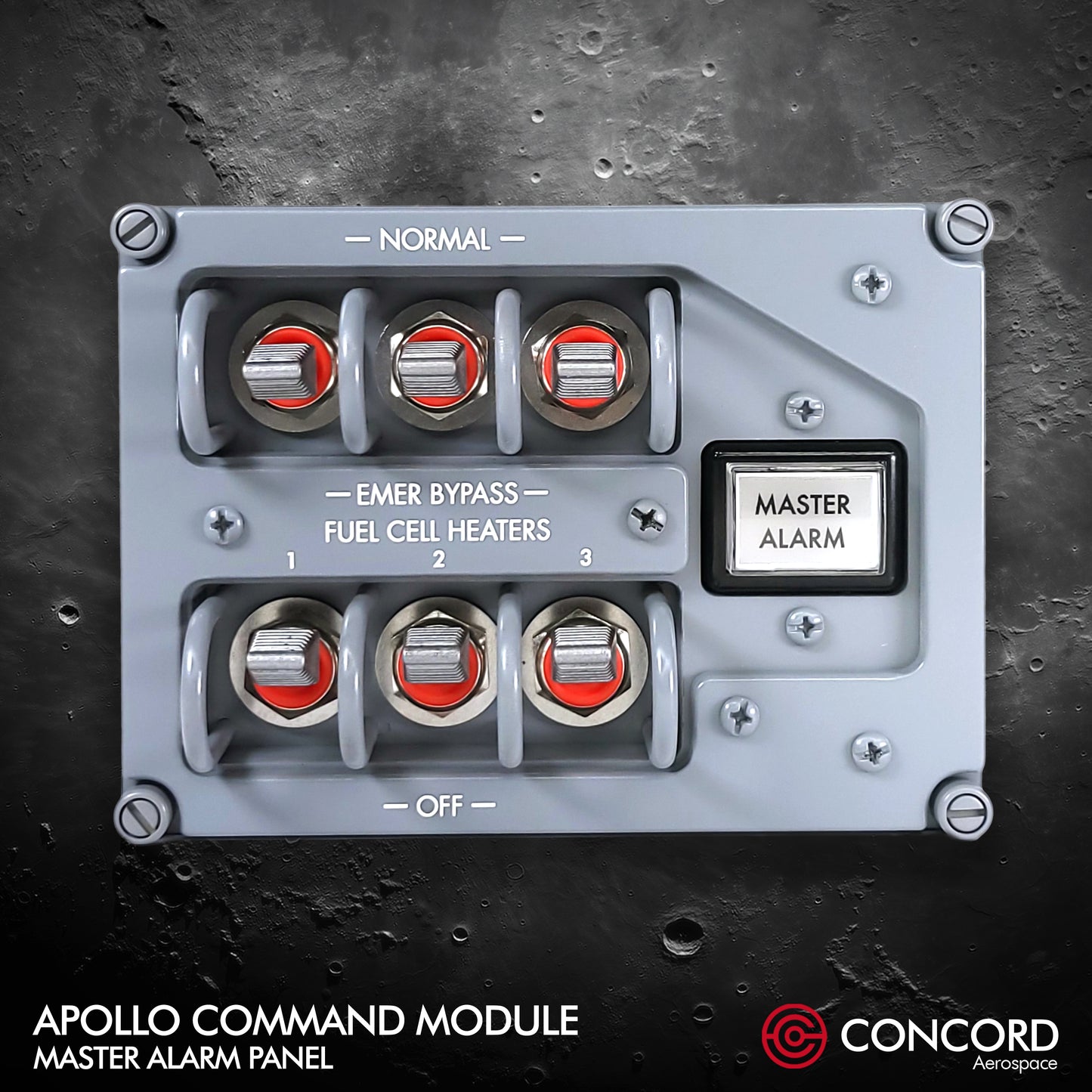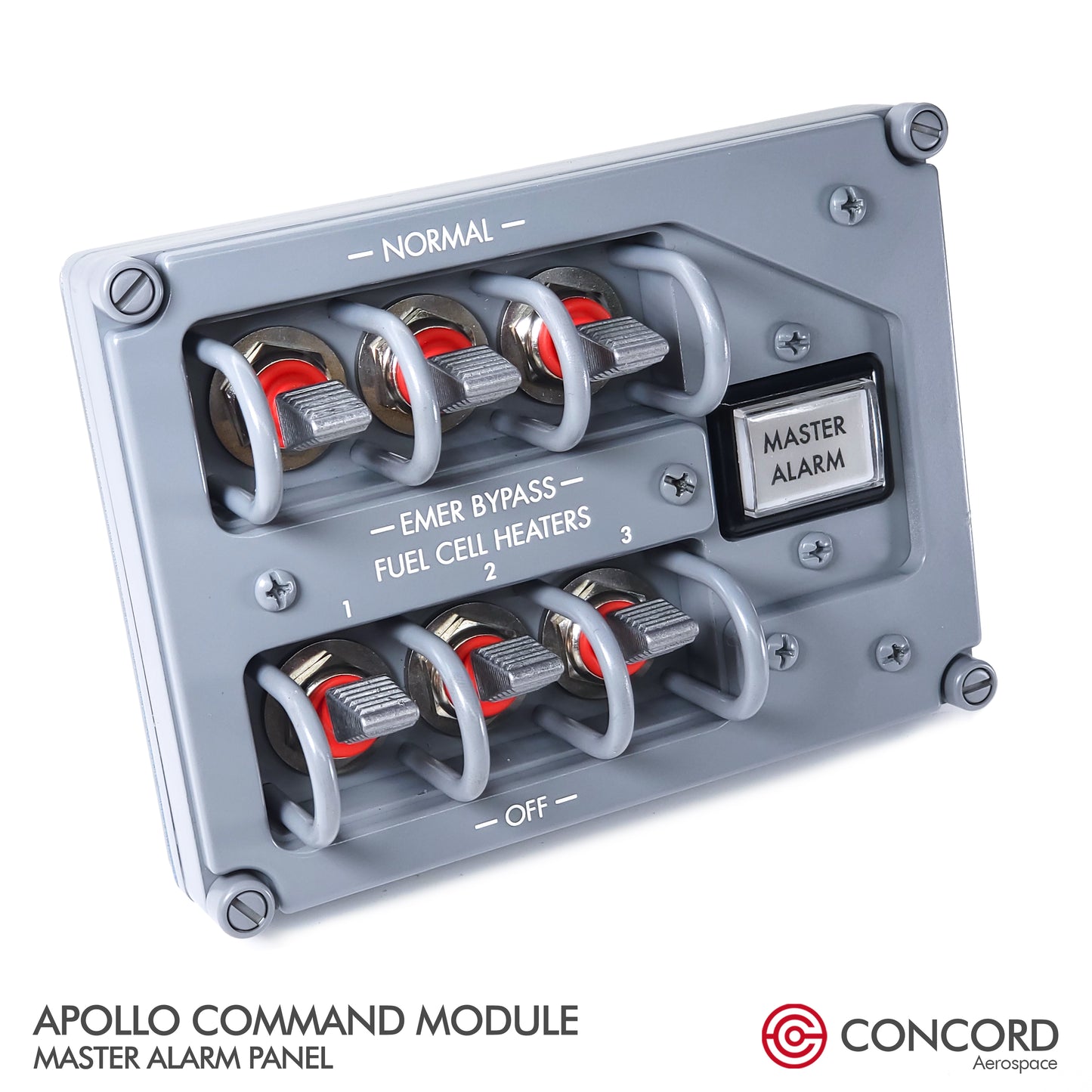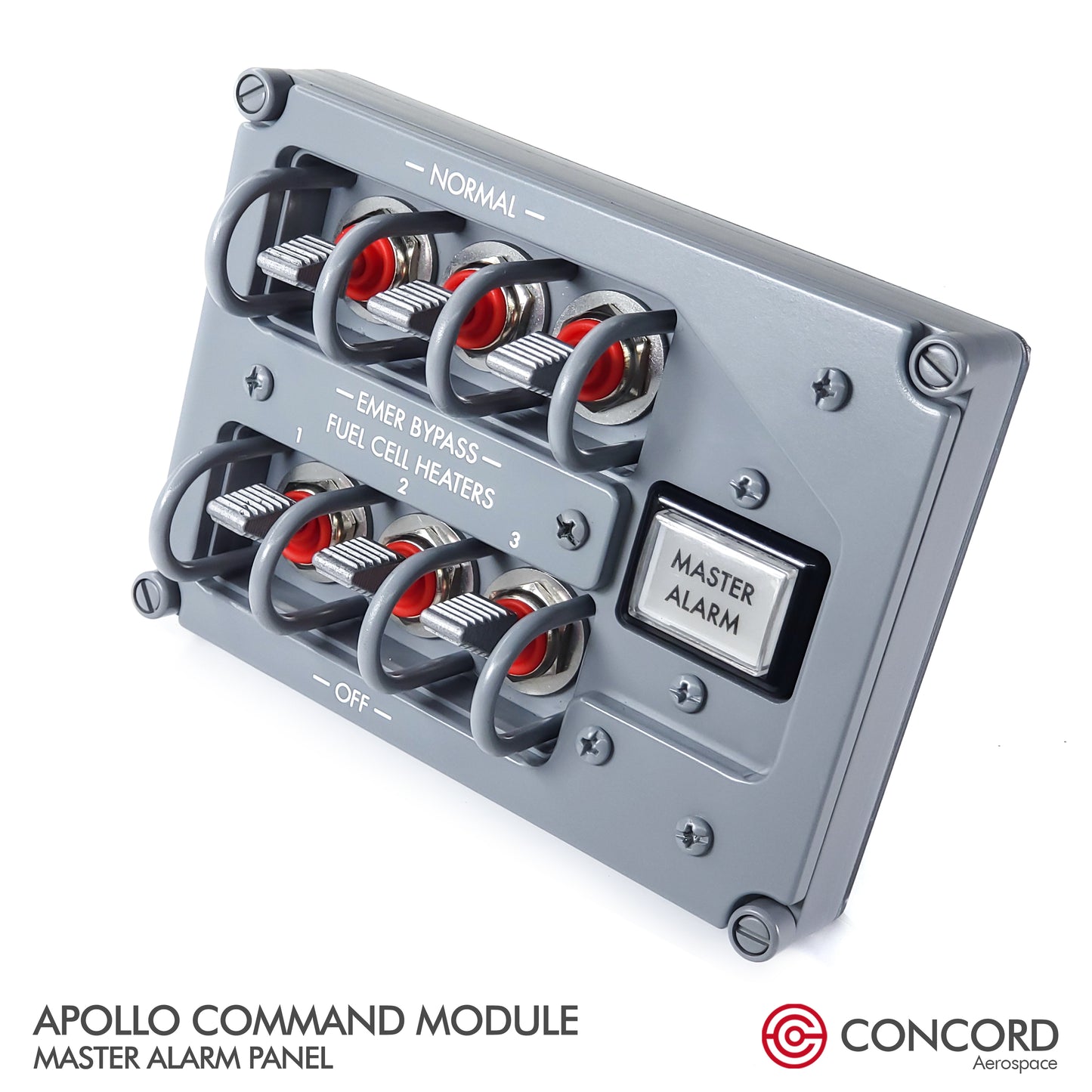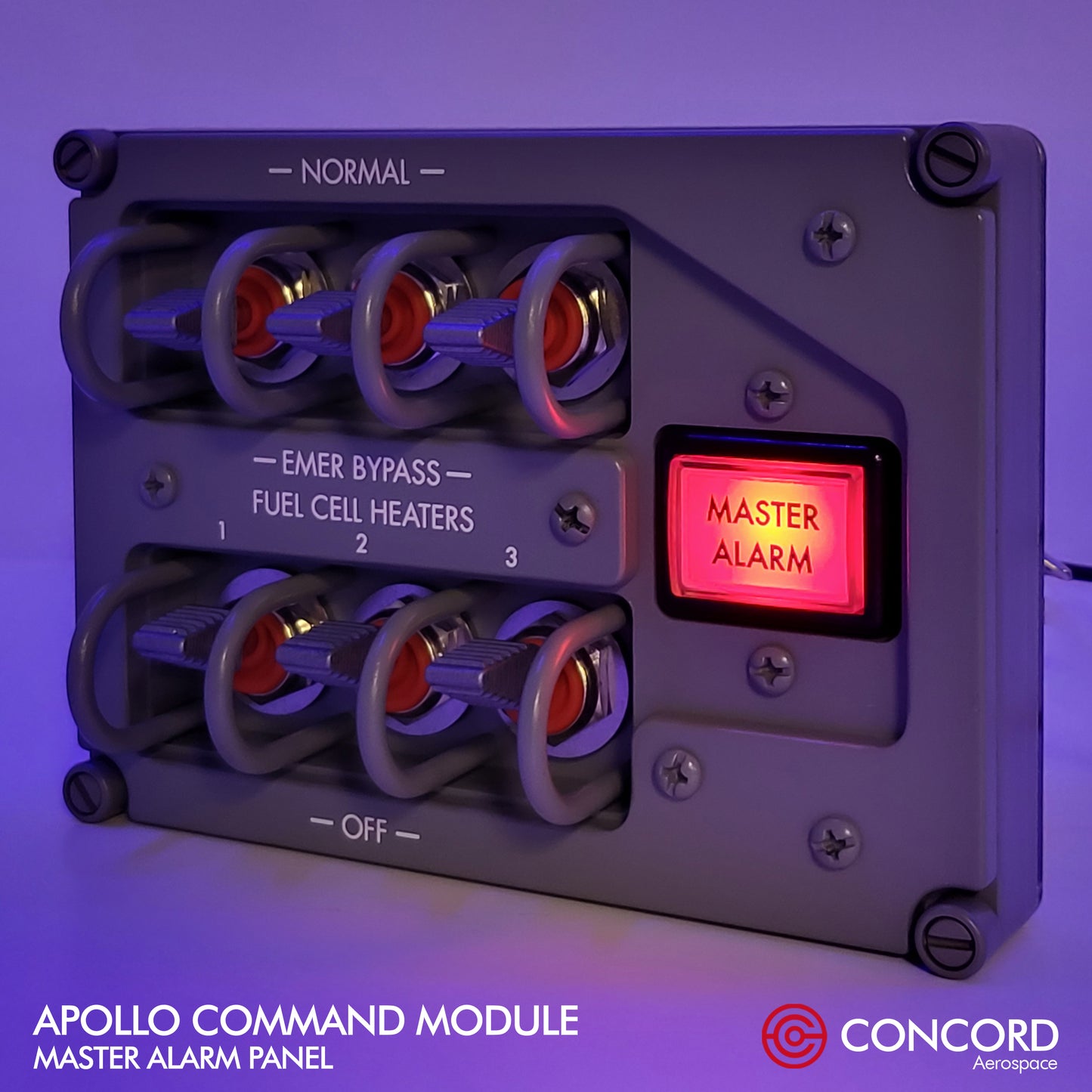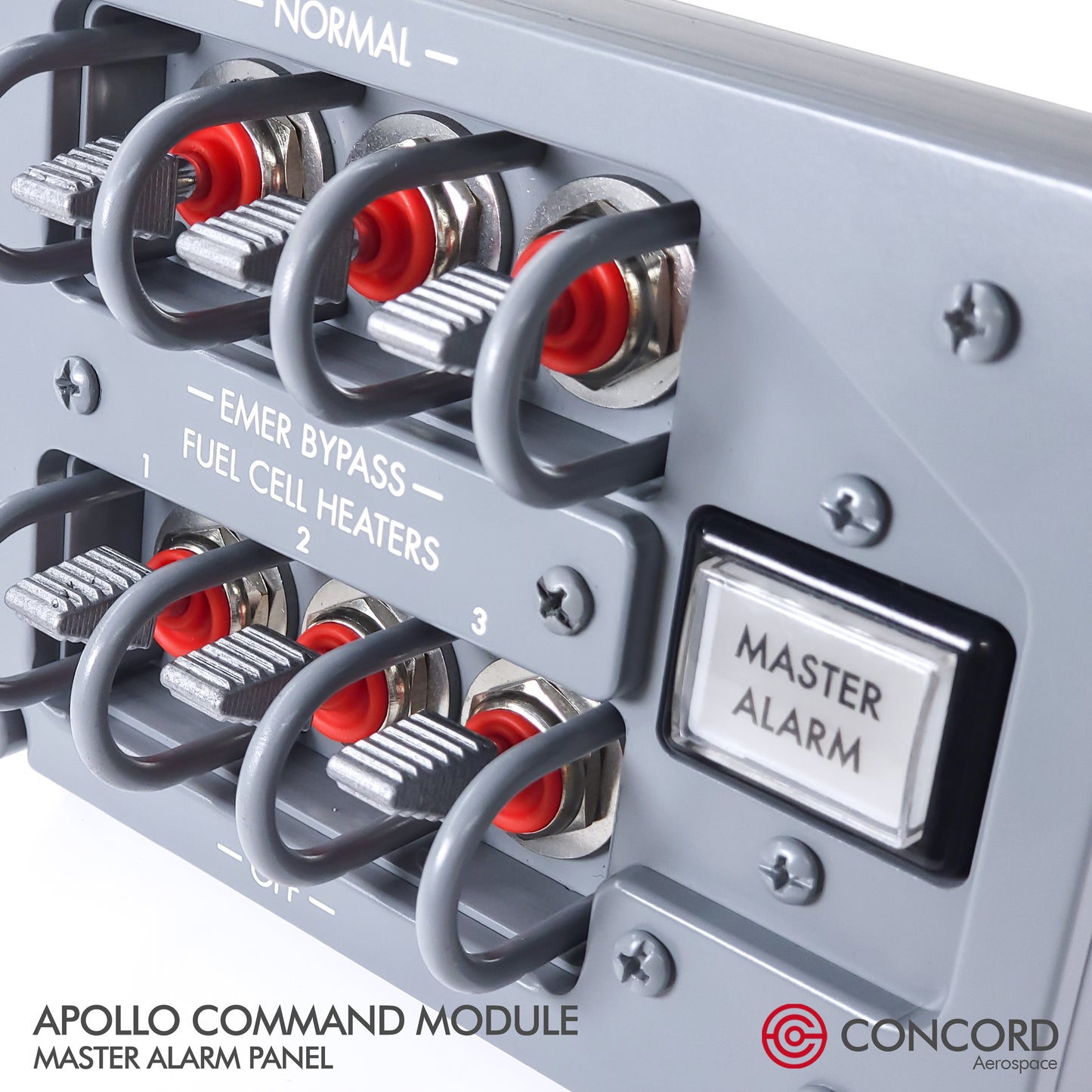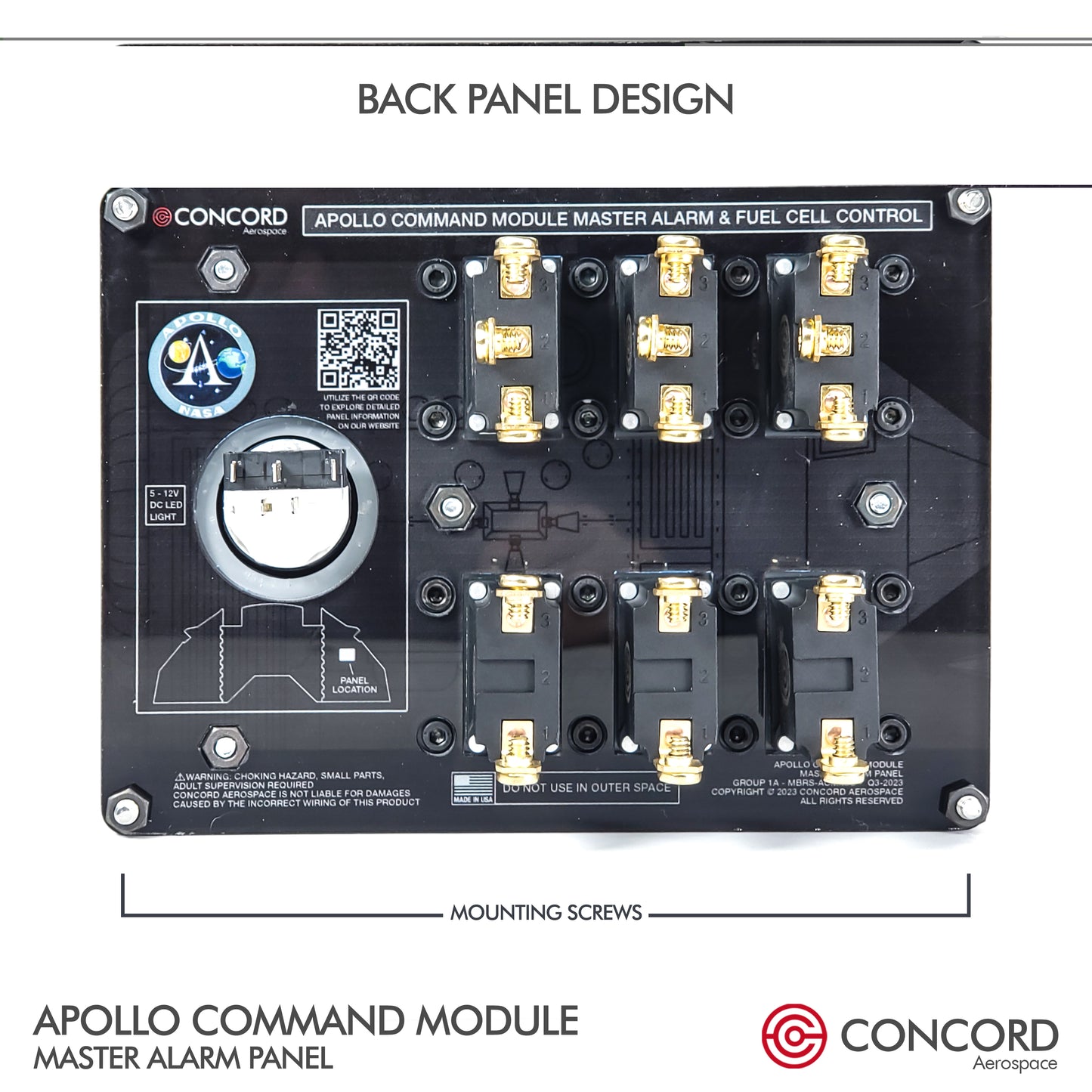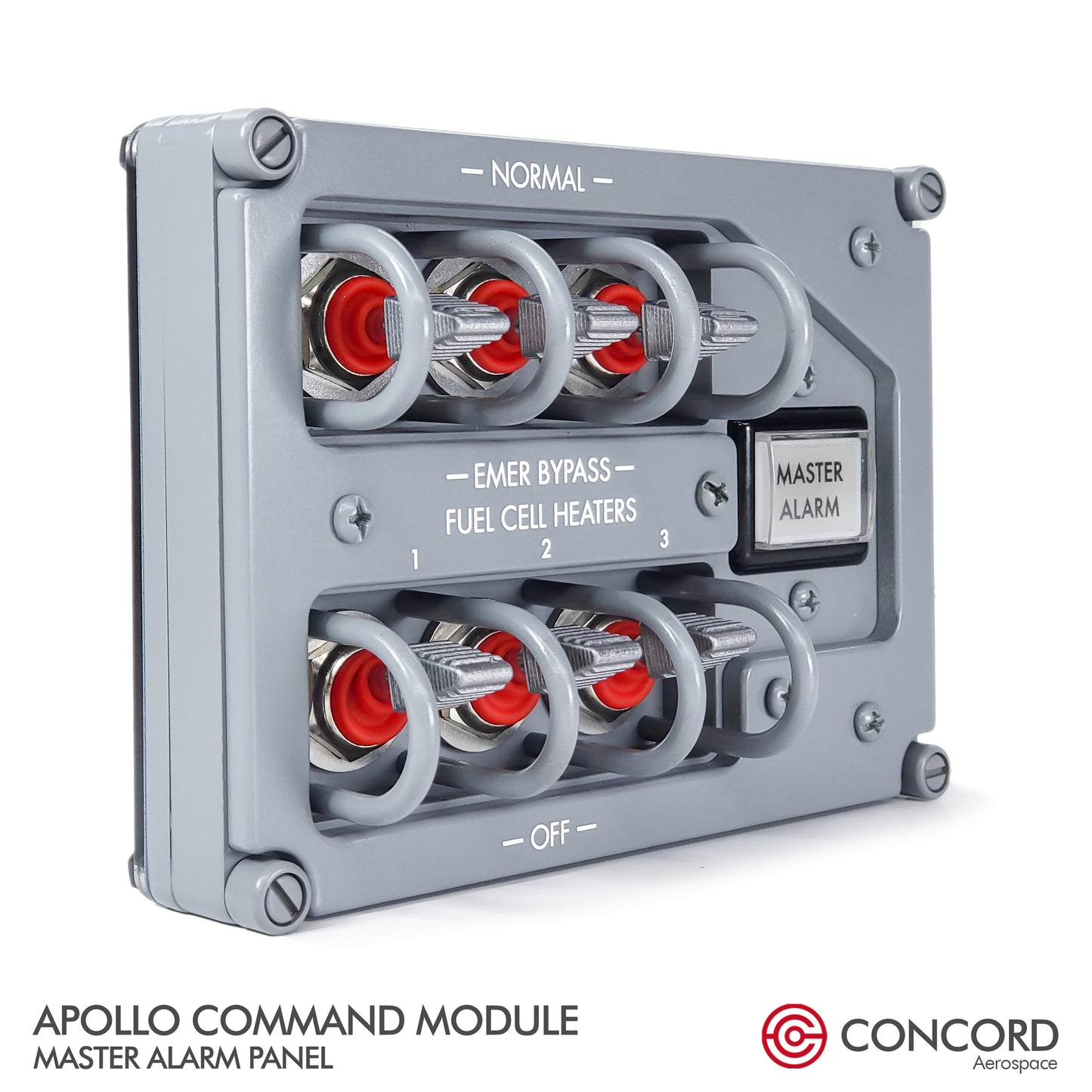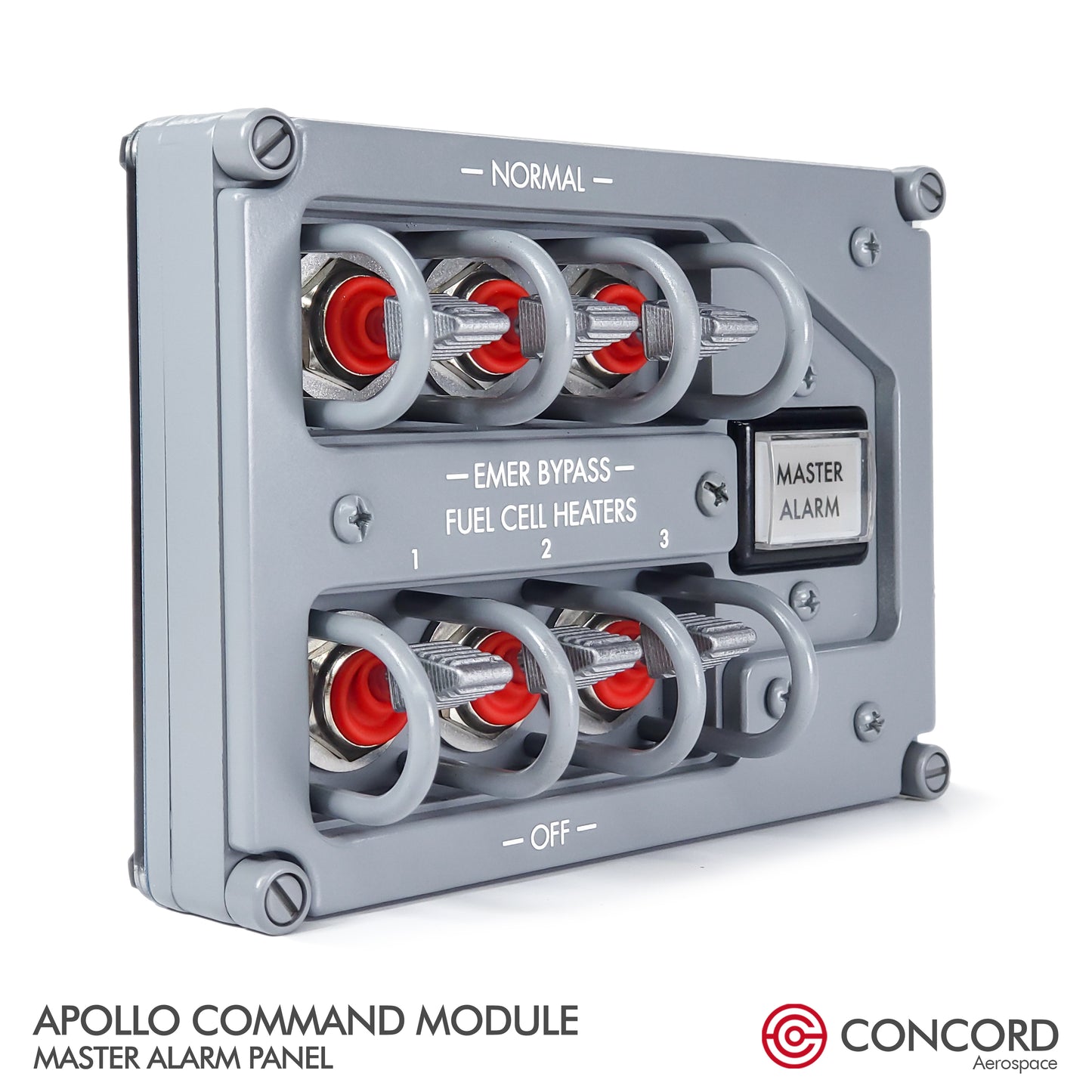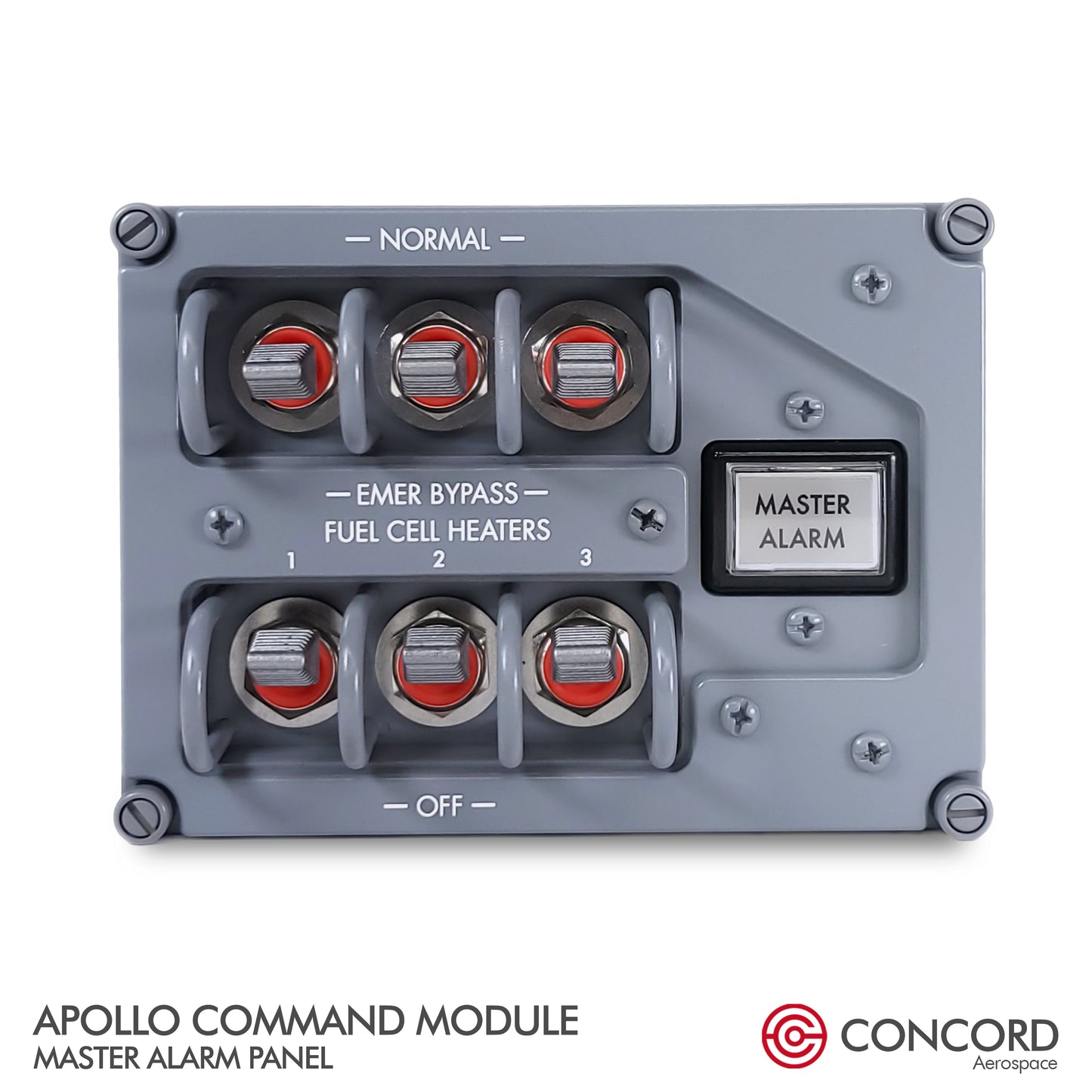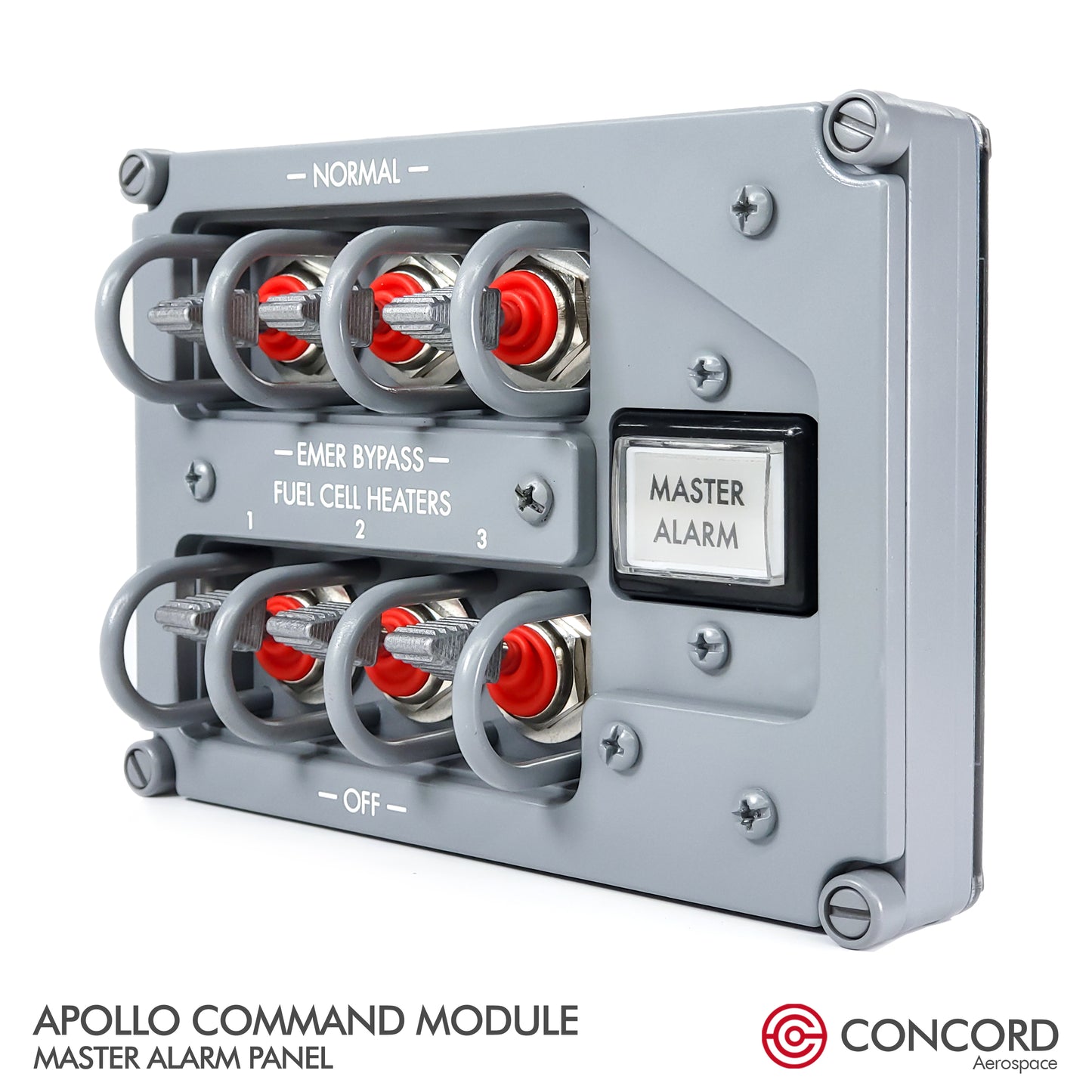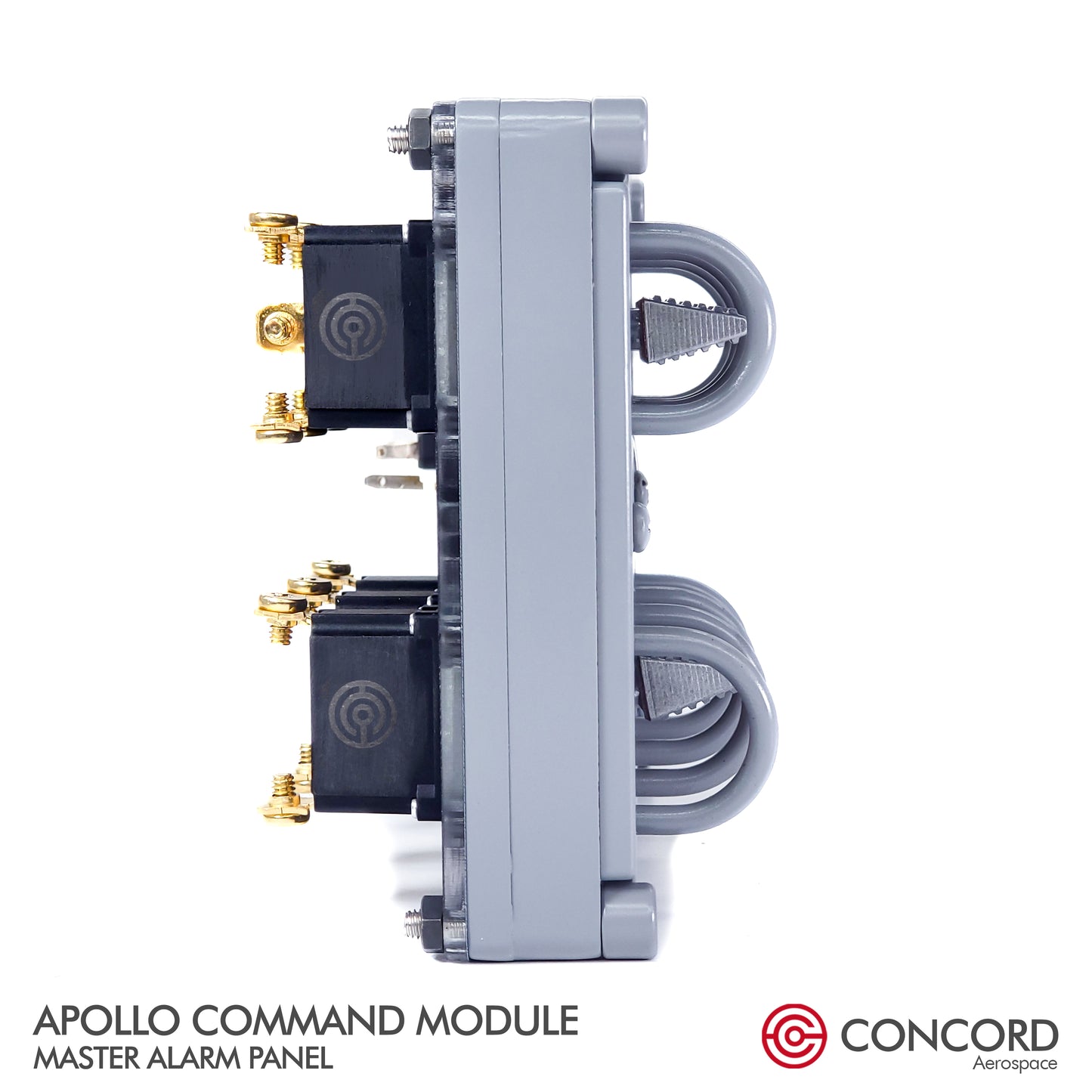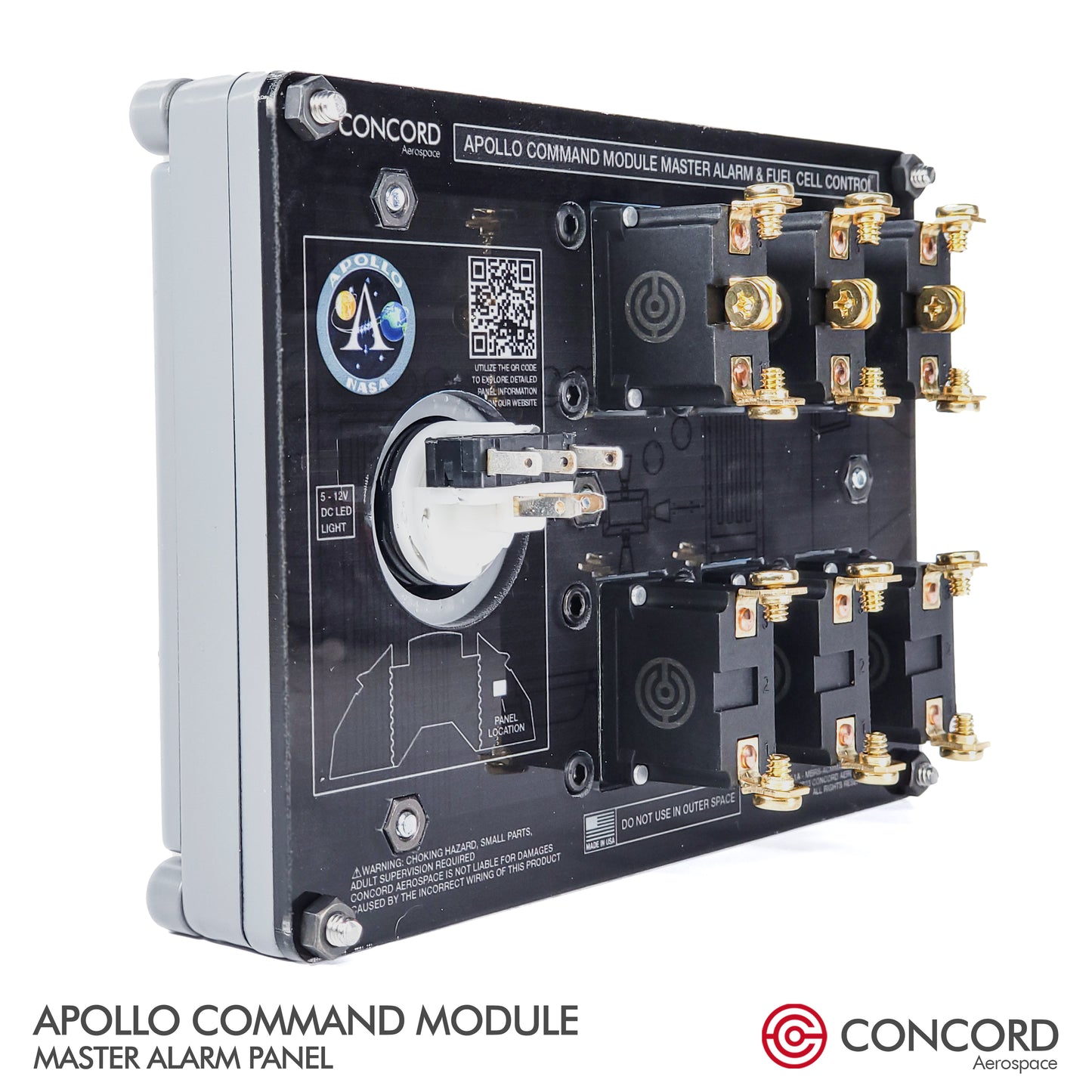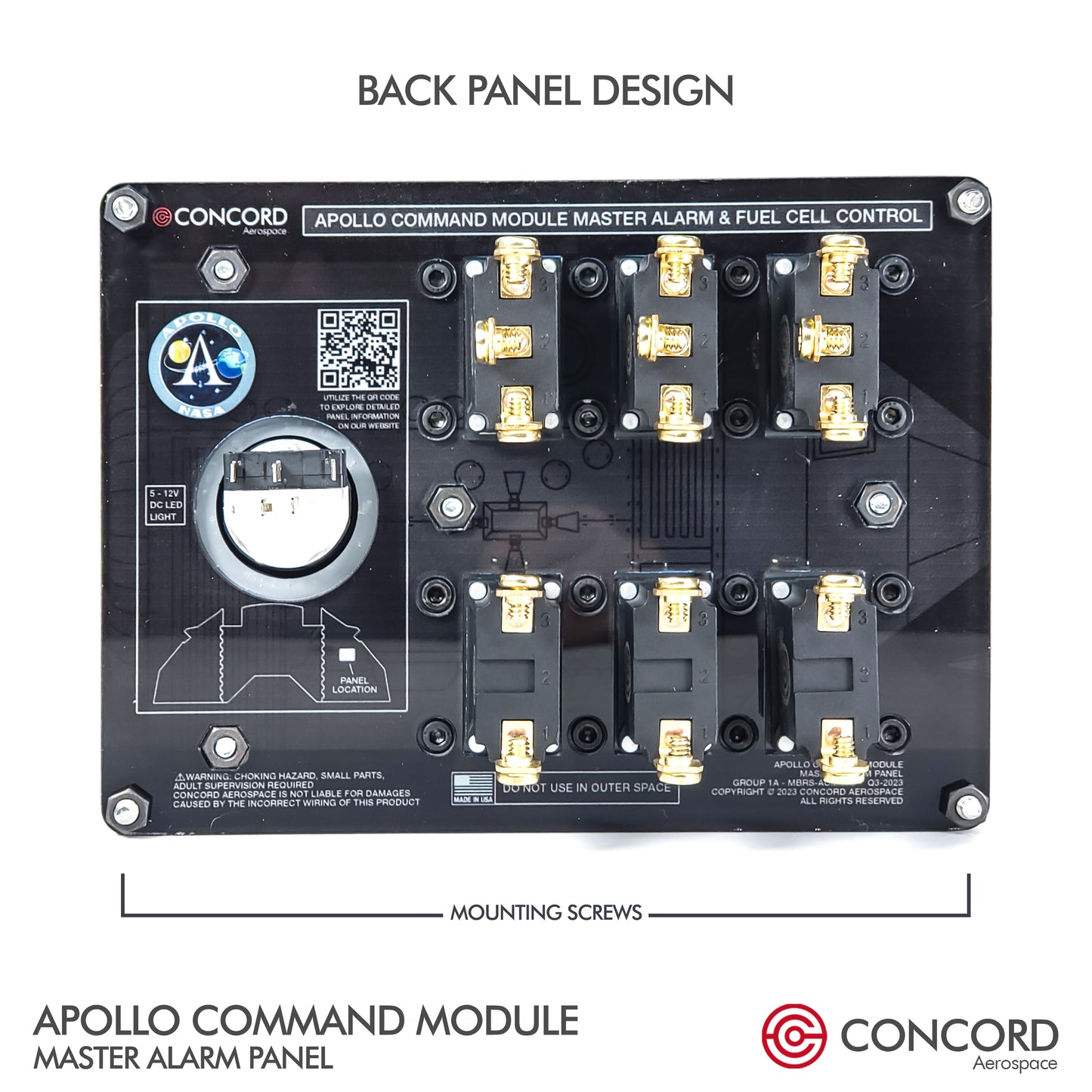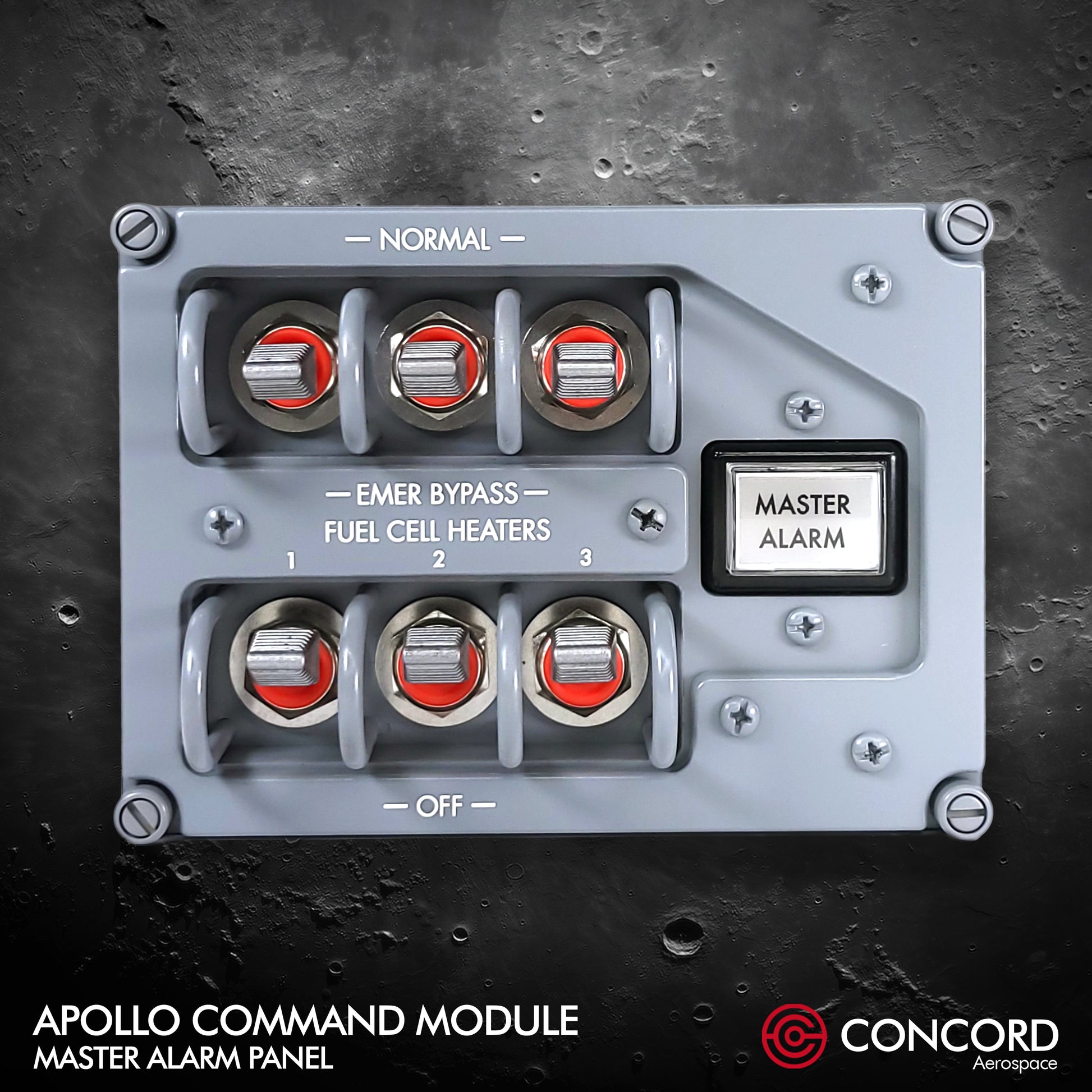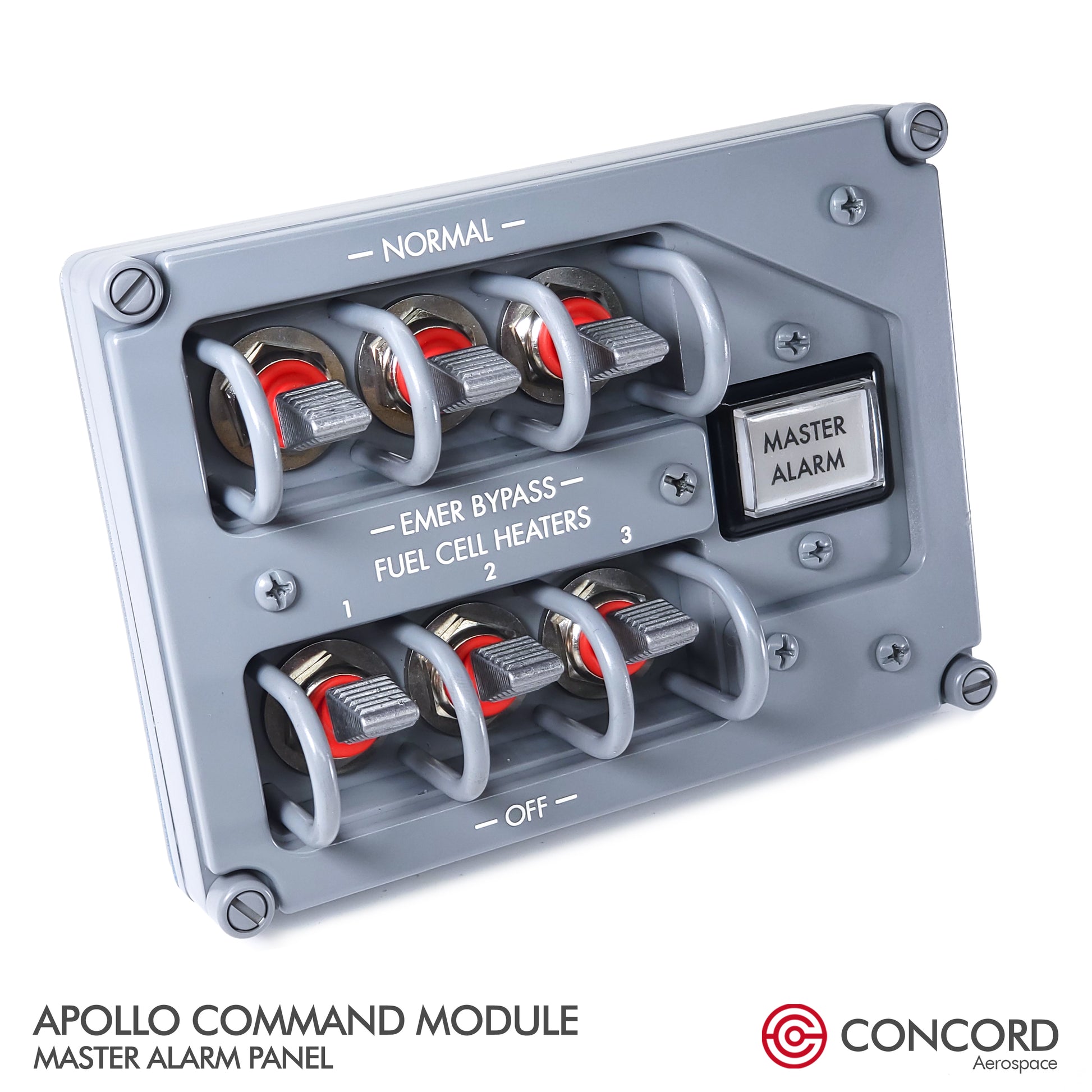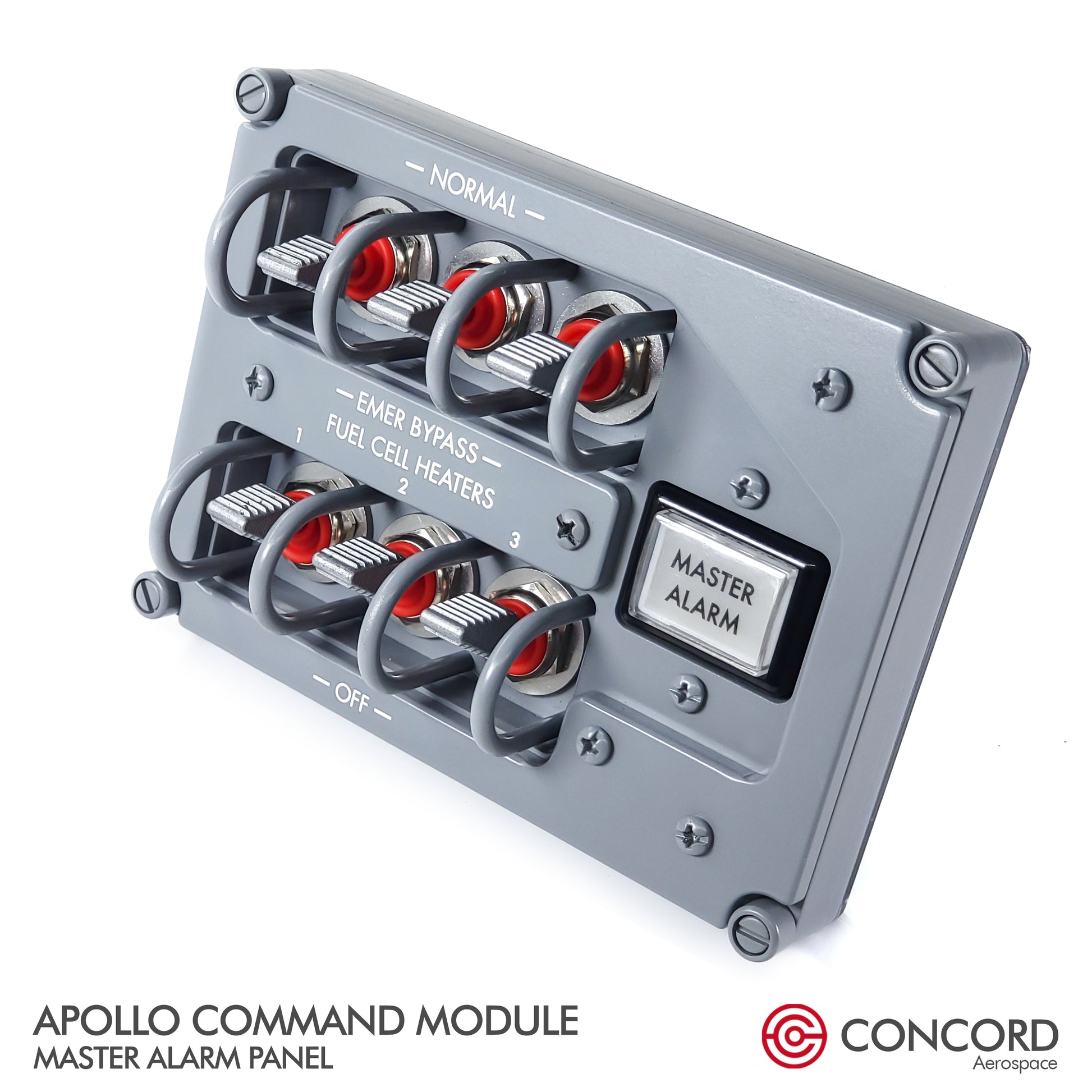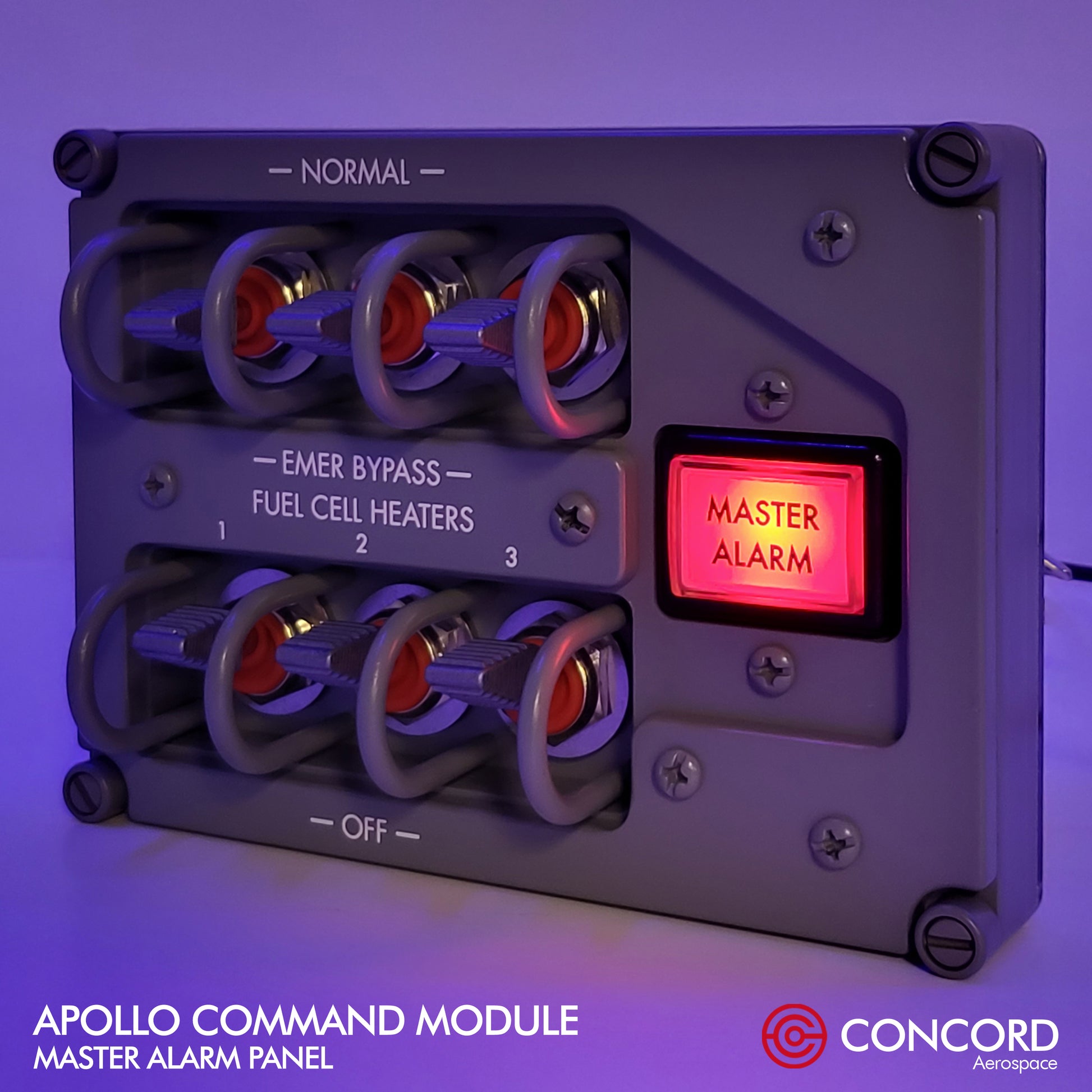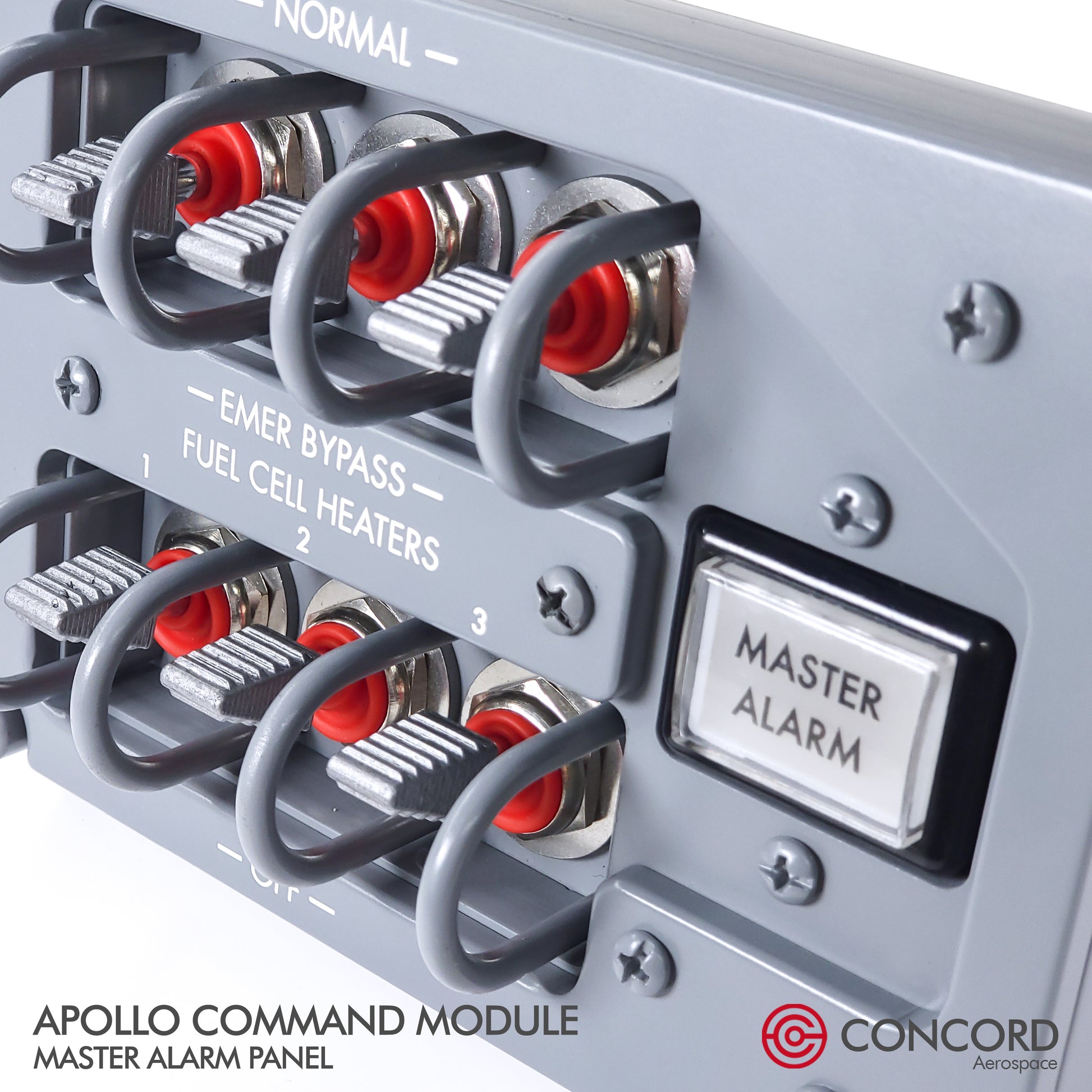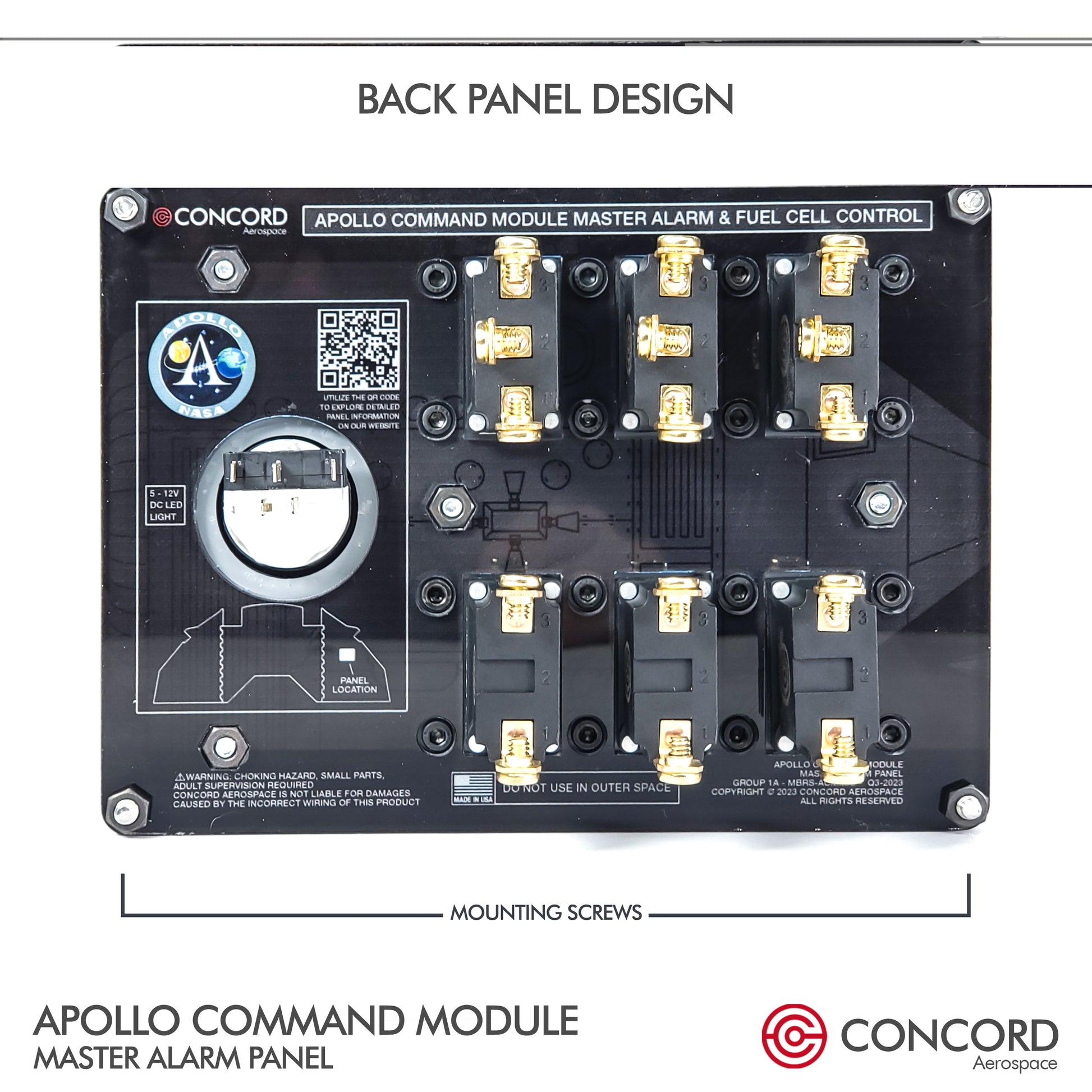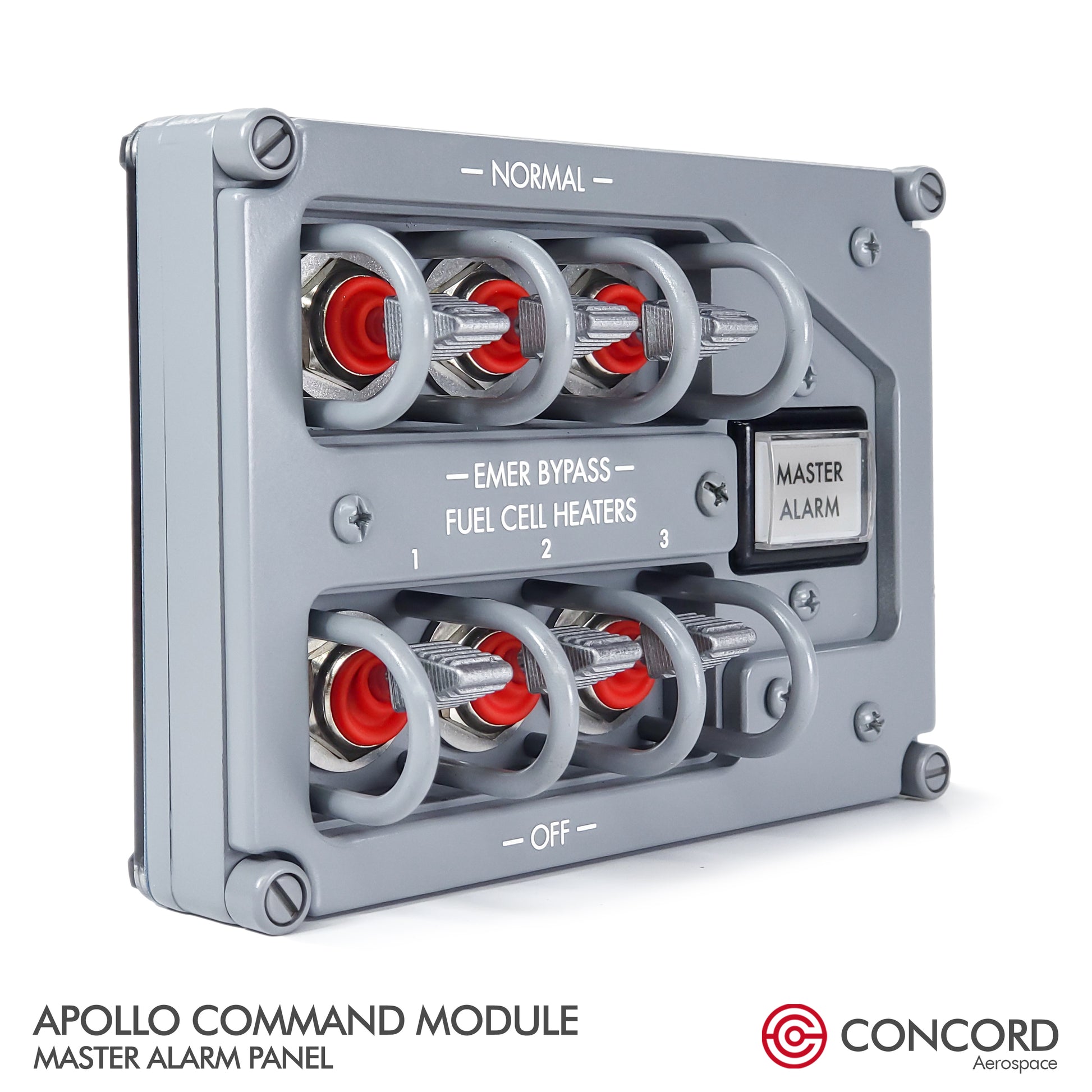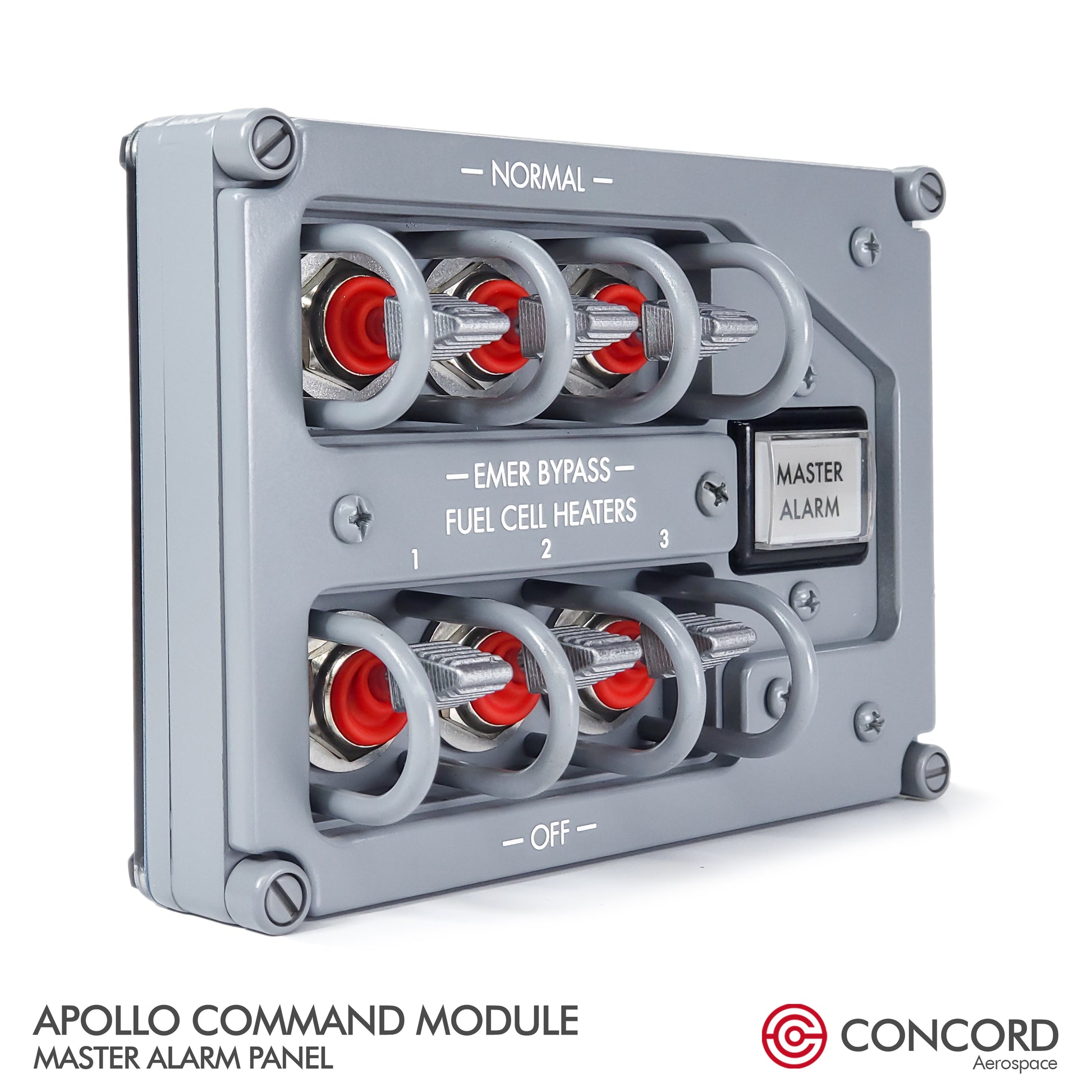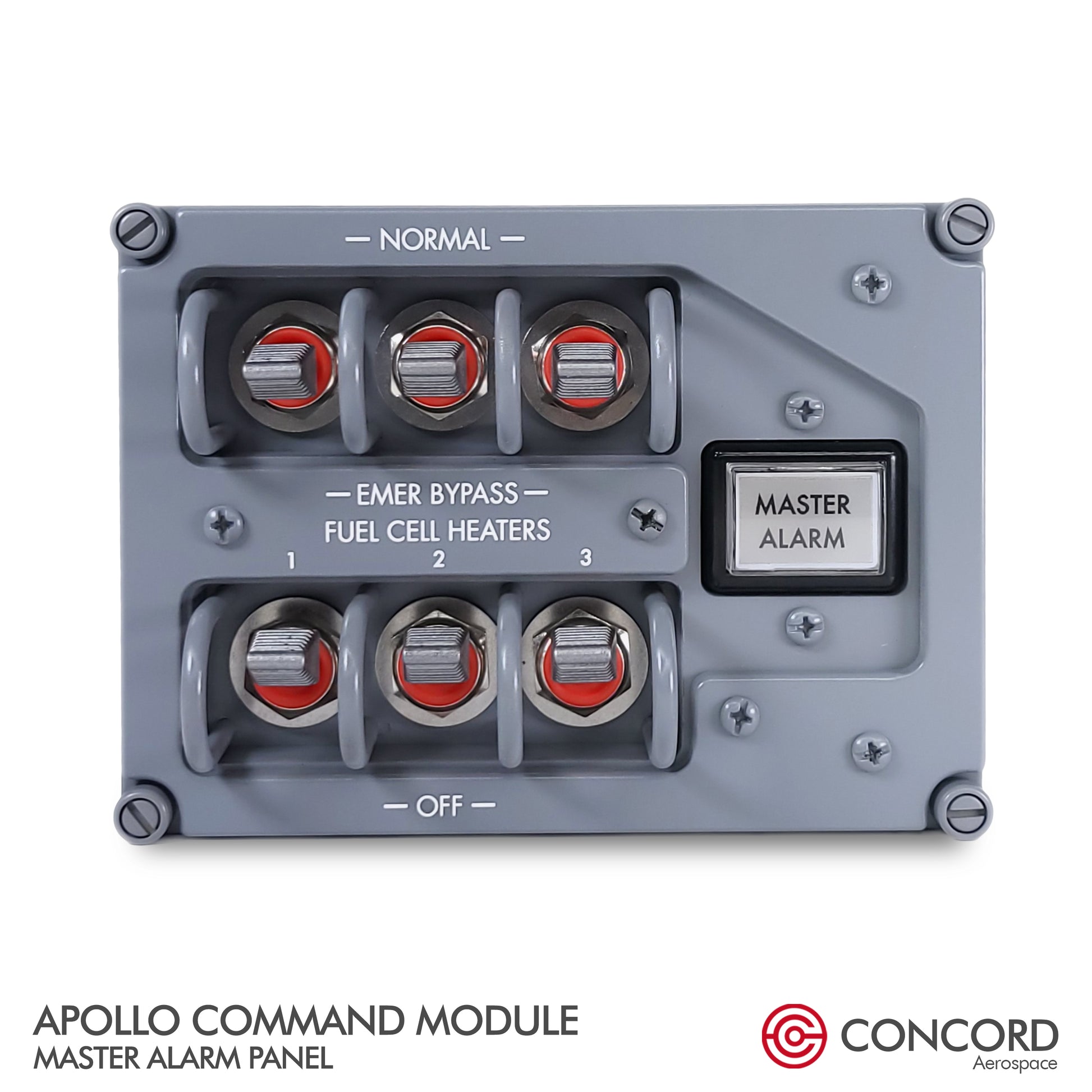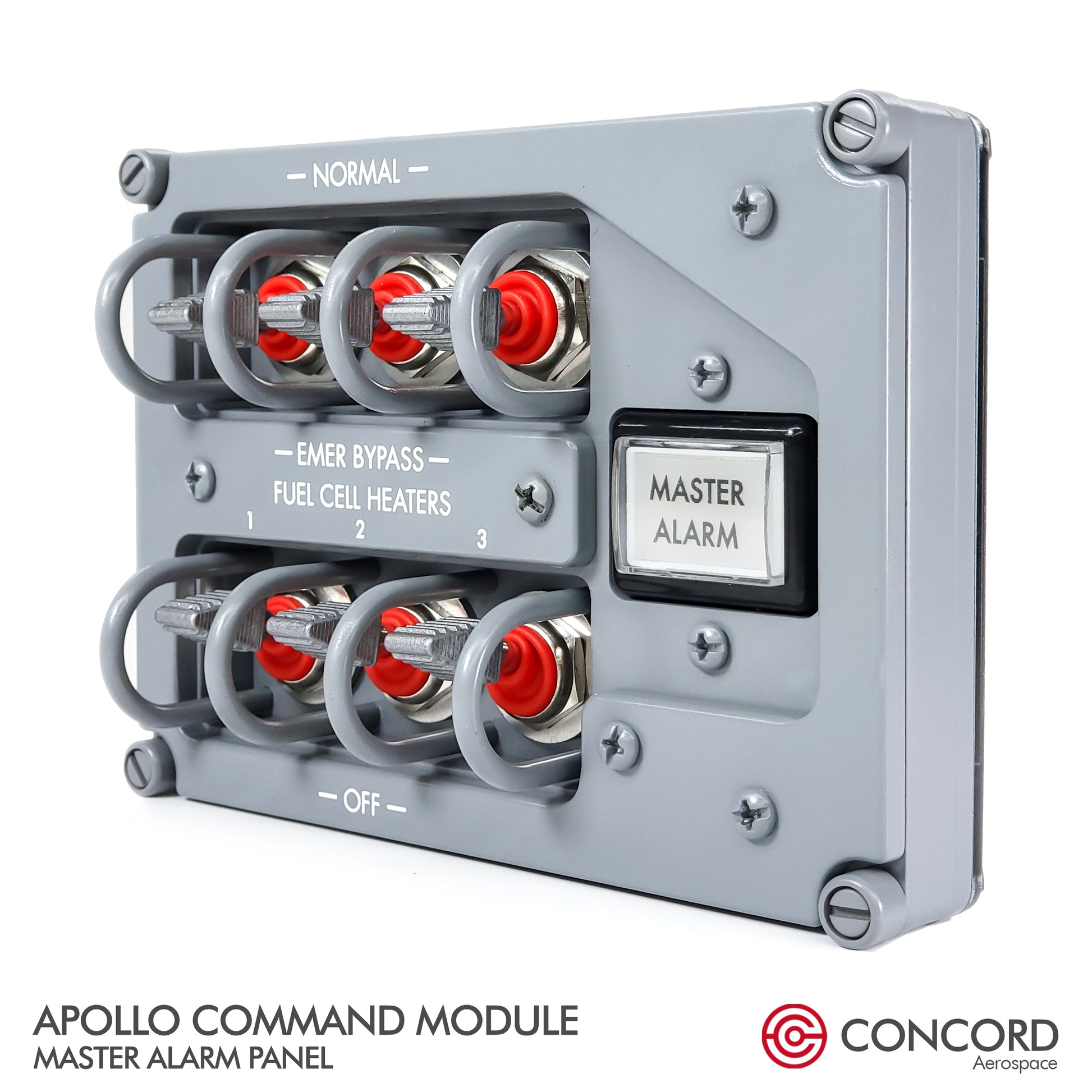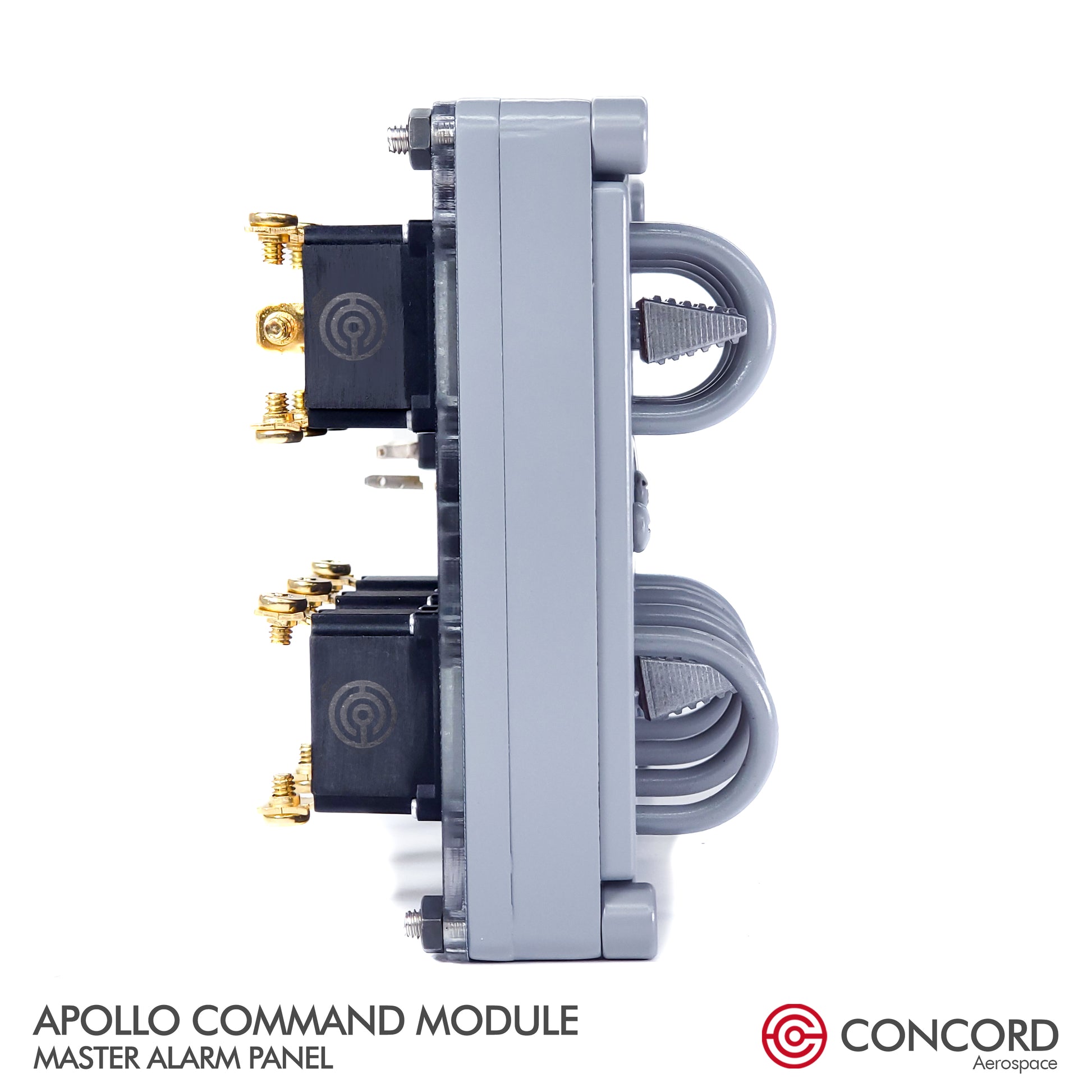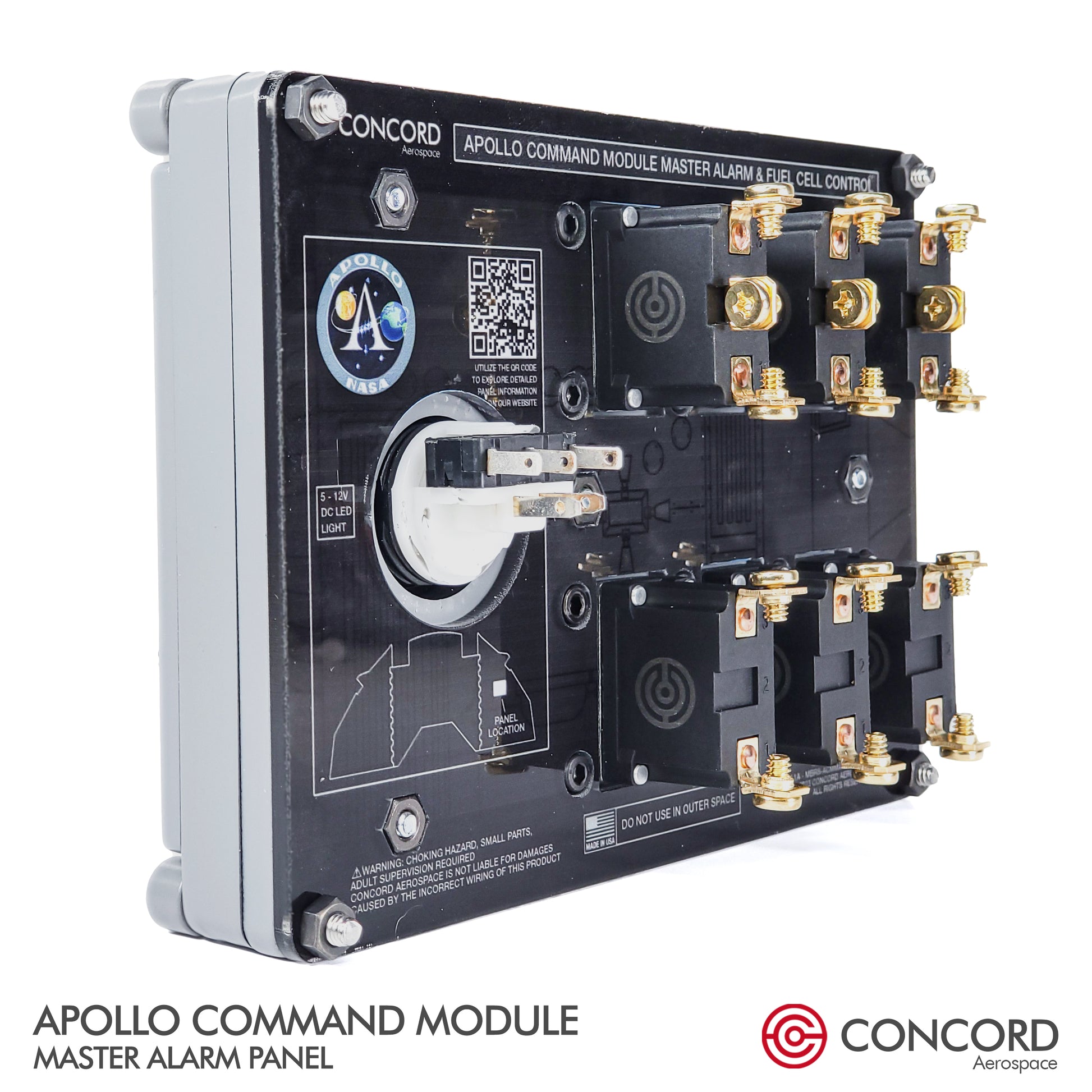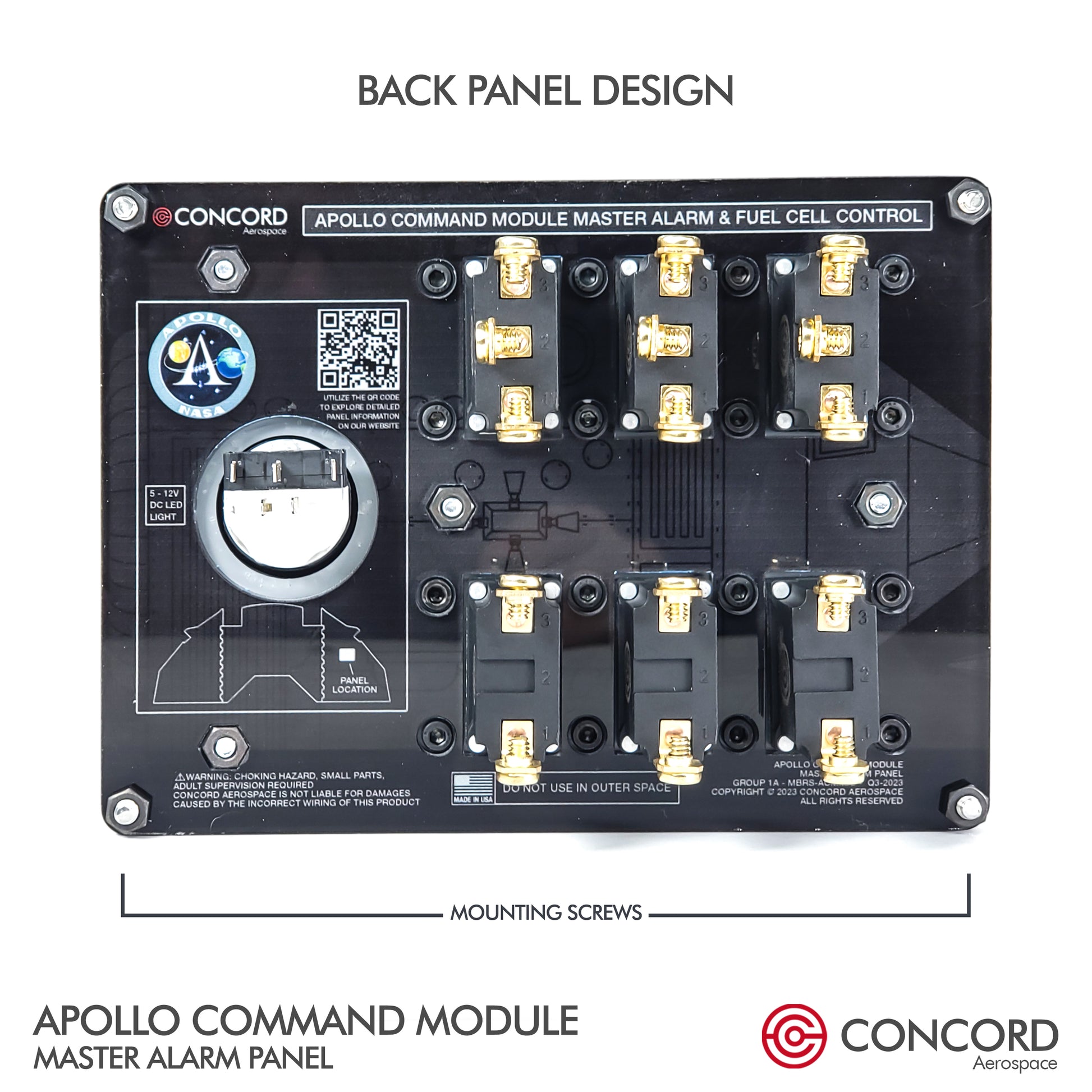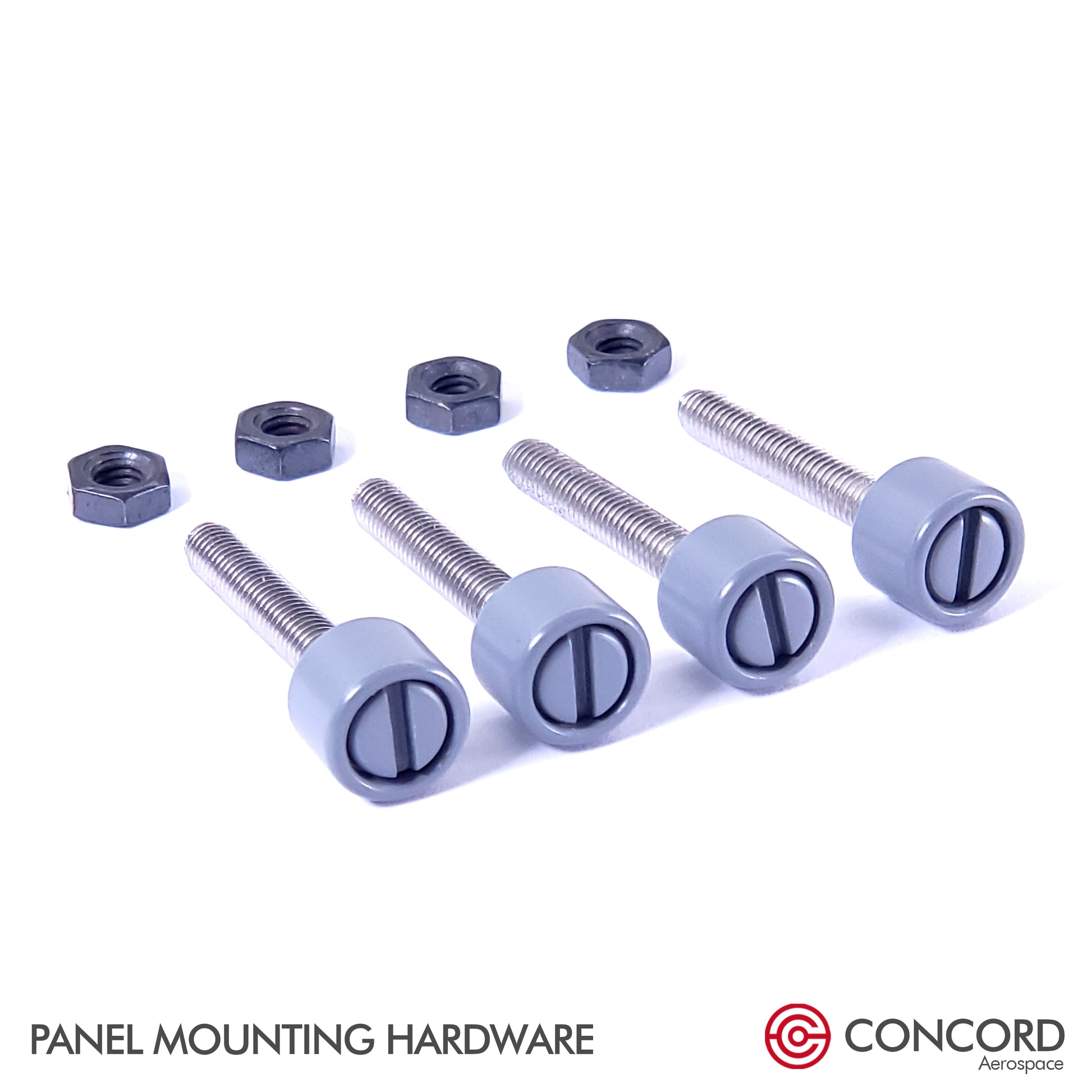APOLLO COMMAND MODULE MASTER ALARM PANEL
APOLLO COMMAND MODULE MASTER ALARM PANEL
Couldn't load pickup availability
SPECIAL UPGRADES
⭐ INCLUDED UPGRADE 6 X INDUSTRIAL TOGGLE SWITCHES - ($78 VALUE)
⭐ INCLUDED UPGRADE MOUNTING HARDWARE - ($16 VALUE)
DESCRIPTION
Presenting the Concord Aerospace Apollo Master Alarm Panel – the next step in our fully operational spacecraft hardware line. Meticulously recreated from the original, our Apollo CM Master Alarm panel preserves its historical significance while aligning with our design philosophy of crafting fully functional collectibles. This panel seamlessly integrates into any project of your choice. Envisioned with the future in mind, our Master Alarm panel will be a central component among our forthcoming interactive and fully customizable offerings. Some of the significant upgrades are listed below.
The Master Alarm indicator of the Apollo Command Module represents a pivotal component of the spacecraft's instrumentation and warning system. This critical feature is designed to promptly alert astronauts to any impending issues or emergencies during their mission, ensuring their safety and enabling timely response.
PANEL DETAILS
- Completely new multi-layer chassis. NEW PANEL SIZE AND DESIGN.
- Master Alarm Illumination ready momentary Push Button - 5V DC
- Upgraded INDUSTRIAL switches (20A-125VAC / 15A-250VAC).
-
NO MORE SPINNING SWITCH TOGGLE CAPS!!!
- 3X MOM-OFF-MOM UPGRADED INDUSTRIAL SWITCHES (SP)
- 3X ON-OFF- ON UPGRADED INDUSTRIAL SWITCHES (SP)
- Many additional switch options and types are available on request.
- Accurately sized aluminum switch guards and routed bezels.
- Industrial multi-coat paint application and laser-etched panel text.
- Custom fabricated toggle red switch boots.
-
BRAND NEW mounting system with upgraded custom-made aluminum DZUS.
- 6" x 4.5" x 3" (150mm x 110mm x 75mm)
- Designed, manufactured, and assembled in Orlando, FL, USA.
MASTER ALARM DURING APOLLO MISSIONS
The Command Module and Lunar Module of the Apollo missions were equipped with the Master Alarm system, a critical component of their instrumentation and warning systems. This system played a pivotal role in promptly alerting astronauts to potential issues and emergencies during their missions, ensuring their safety, and enabling swift responses.
Here are the most notable instances of the Master Alarm triggering across various Apollo missions:
- Apollo 11 - Lunar Module Descent: The Master Alarm sounded as the Lunar Module "Eagle" descended to the Moon's surface, prompting astronaut Neil Armstrong to take manual control and safely navigate to the landing site.
- Apollo 12 - Lightning Strike: Just after liftoff, a lightning strike triggered the Master Alarm, causing telemetry failures. The crew's quick actions restored the systems, allowing the mission to continue.
- Apollo 13 - Oxygen Tank Explosion: An oxygen tank explosion led to the Master Alarm sounding. The crew's response and teamwork were crucial in overcoming this crisis during their journey back to Earth.
- Apollo 14 - Ascent Abort Signal: Shortly after liftoff, a Master Alarm-triggered ascent abort signal caused momentary confusion, which was resolved after verifying the systems' integrity.
- Apollo 16 - Lunar Module Descent: The Master Alarm alerted the crew during the Lunar Module "Orion's" descent to the lunar surface, leading to increased communication and coordination for a safe landing.
- Apollo 17 - TLI Navigation Anomaly: Following Trans-Lunar Injection, the Master Alarm alerted the crew to a navigation anomaly, resulting in recalculations to ensure the spacecraft's correct trajectory.
These instances underscore the vital role the Master Alarm played in various Apollo missions, demonstrating its importance in astronaut safety and mission success.
DISCLAIMER
By accessing, purchasing, or utilizing any product & services provided by Concord Aerospace, the client acknowledges and accepts that such utilization is subject to the client's own judgment and at their own risk. The client fully assumes all responsibilities for any installation, maintenance, or use of these products. The client understands that any installation or use of these products may pose risks, including but not limited to the risk of electrical shock, injury, or damage to equipment and the installation environment. In applications that require power, it is recommended that a professional installation be carried out to minimize any risks of injury or damage resulting from improper installation or use of all Concord Aerospace products.
SHARE APOLLO COMMAND MODULE MASTER ALARM PANEL
